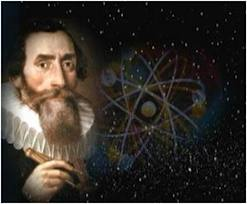"The only way of discovering the limits of the possible is to venture a little way past them, into the impossible." ~ Arthur C. Clarke
The literary genre of science fiction is diverse, and its exact definition remains a contested question among both scholars and devotees. This lack of consensus is reflected in debates about the genre's history, particularly over determining its exact origins.
There are two broad camps of thought, one that identifies the genre's roots in early fantastical works such as the Sumerian Epic of Gilgamesh (earliest Sumerian text versions c. 2150-2000 BCE). A second approach argues that science fiction only became possible sometime between the 17th and early 19th centuries, following the Scientific Revolution and major discoveries in astronomy, physics and mathematics.
Question of deeper origins aside, science fiction developed and boomed in the 20th century, as the deep integration of science and inventions into daily life encouraged a greater interest in literature that explores the relationship between technology, society and the individual. In recent decades, the genre has diversified and become firmly established as a major influence on global culture and thought. Continued ...
Virtual Introduction to Science Fiction
Videos, Lectures and more at www.virtual-sf.com
Depending on which scholar you ask, science fiction begins at so many different stages in human history that it is hard to find a common ground for discussion of the pre-20th century science fiction. Almost all scholars can agree on the fact that the term itself is an invention of the 20th century and that pulp magazines developed the genre into what we commonly understand as classical science fiction. But that is about all the consensus you will get.
.jpg) |
| Voyage to the Moon Gustav Dore (1870) |
Most famously though, critic Brian Aldiss argued in his seminal work Billion Year Spree from 1973 that science fiction “was born in the heart and crucible of the English Romantic movement in exile in Switzerland, when the wife of the poet Percy Bysshe Shelley wrote Frankenstein: or The Modern Prometheus” (3). Gothic fiction, rationalized by modern science, thus becomes an important influence to science fiction which editor Hugo Gernsback picked up on, when he defines what he calls “scientifiction as ‘the Jules Verne, H.G. Wells, and Edgar Allan Poe type of story – a charming romance intermingled with scientific fact and prophetic vision’” (Gernsback quoted in Bould and Vint 6).
Independent Scholar, Dr. Brian Stableford, has examined traditions of literary expression that came before this statement and the earliest definition of science fiction as a genre. To read his lecture, Science Fiction Before 1900, click HERE.



.jpg)













